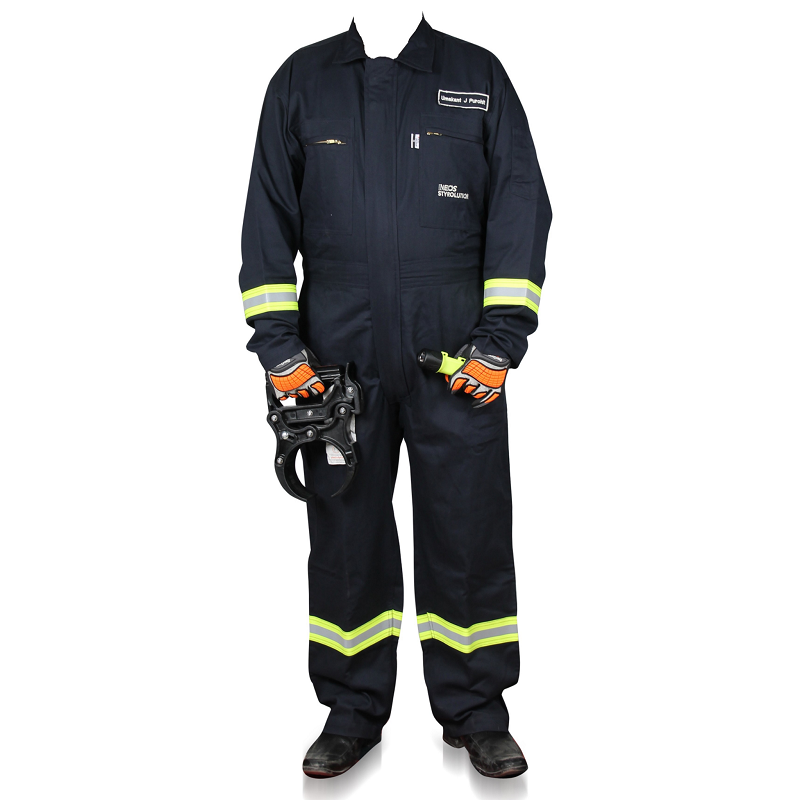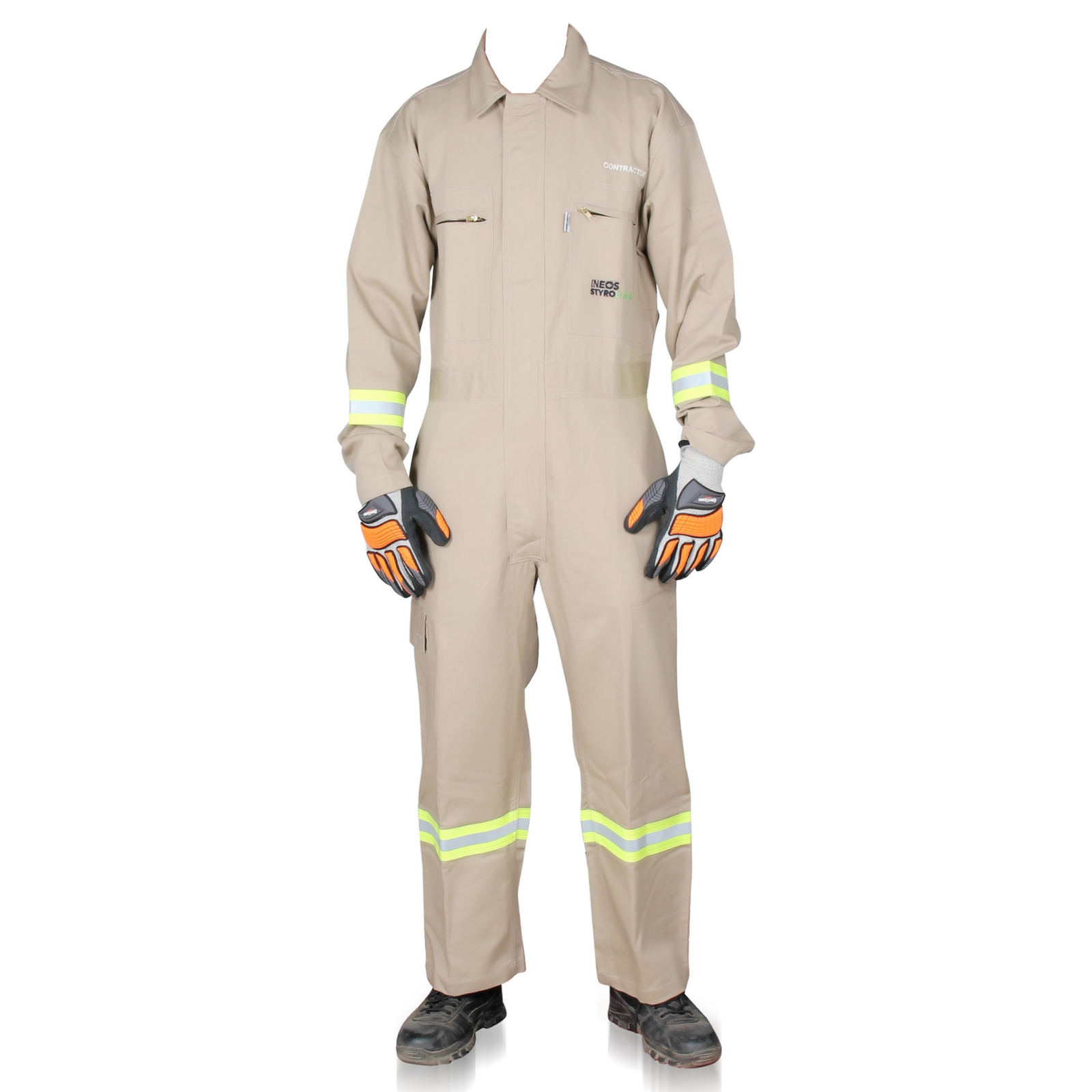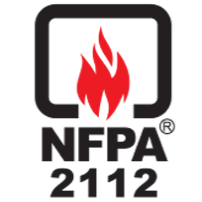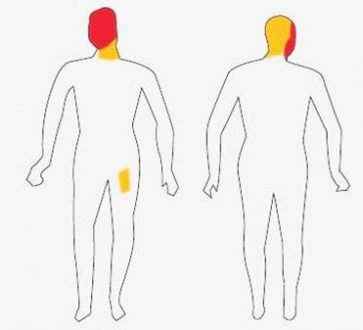FR Coverall Against Flash Fire – Single Layer
Features:
- Made from 7 oz UltraSoft® 0301 Style twill weave fabric
- Fiber content: 88% FR Cotton/12% High Tenacity FR Nylon
- Flat lays collar with hanging loop
- A two-way heavy-duty metal brass zipper on FR tape
- Flap guard over zipper with snap closures
- Back elasticized waist
- Two chest pockets with metal zippers for closure
- Two cross side pockets
- Two back pockets with flap
- One tool pocket on right leg
- Pencil pocket on left arm
- Separate arm cuffs with 2 position snap closures
- Yellow Silver Yellow (Y-S-Y) 2” Reflective tape stitched on the shoulder, arms and legs
Sizes Available: S, M, L, XL, XXL, 3XL
Style Options: Coverall, Jacket & Trouser & Long Coat
Colours Available: Orange, Navy Blue, Royal Blue, Beige/Khaki &Red


Accessories Used
- Yellow Silver Yellow(Y-S-Y) FR Reflective tape imported certified to NFPA 2112
- FR metallic brass zipper with Nomex Tape
- FR Thread for stitching whole garment
- Superior quality metallic snap closures
- Velcro’s used in the garment are also Flame Retardant
- Superior quality Elastic
THE CERTIFICATIONS

NFPA 2112
The National Fire Protection Association (NFPA) developed NFPA 2112- an industry standard on flame resistant garments for protection of industrial personnel against flash fire.
NFPA 2112 sets failure of the fabric at >50% total body burn. The NFPA 2112 standard requires a mannequin test duration of 3 seconds precisely because it is viewed as the practical upper limit of a flash fire.
The mannequin test required by NFPA 2112 utilizes the ASTM International F1930 standard test method.

ASTM F1930
It is a test method to test the suits. The ASTM F1930 features a full-size mannequin wearing a standardized coverall in a burn chamber with propane torches capable of fully engulfing it.
The mannequin has more than 100 thermocouples evenly distributed over its surface to predict the extent, severity and location of body burn.

EN ISO 11612
ISO 11612:2008 specifies performance requirements for garments made from flexible materials, which are designed to protect the wearer’s body, except the hands, from heat or flame.
Our Garment is compliant to it, and its main task is to signal to the wearer and the surroundings that the garment is flame retardant.
FLASH FIRE PROTECTION - LABORATORY TESTING PROTOCOL
- Independent university laboratory testing
- Adherence to ASTM F1930 standard test method
- Identically sized and styled 42 regular coveralls
- All coveralls tested over 100% cotton T-shirts and briefs
- Body Burn – Less than 15 % as per the mannequin test
Life of the garment – means that the service life expectancy is based on mechanical failure (tear, puncture etc.) of the garment, not the flame resistance.
In other words, the cotton will wear out physically long before there is any compromise on FR performance. The FR in the garment pertains till the garment exists.
HERE ARE THE RESULTS OF ASTM 1930 TESTS ON ULTRASOFT AND NOMEX FABRICS
(AN ACTUAL DIFFERENCE BETWEEN COMPLIANCE AND EXCEPTIONAL PROTECTION)
COVERALL WEIGHT COMPARISON

THE UNIVERSITY OF ALBERTA
Protective Clothing and Equipment Research Facility.
Fire Protective Clothing Evaluation System.
5-15-2007 451 Westex Ultra Soft 7 oz
| Test Type | Flash Fire Simulation |
| Exposure type | 3.06 sec. |
| Measurement Time | 60.0 sec. |
| TOTAL BURN | 13.95% |

THE UNIVERSITY OF ALBERTA
Protective Clothing and Equipment Research Facility
Fire Protective Clothing Evaluation System.
4-24-2007 Nomex IIIA 4.5 oz
| Test Type | Flash Fire Simulation |
| Exposure type | 3.06 sec. |
| Measurement Time | 60.0 sec. |
| TOTAL BURN | 38.05% |
The Ultra Soft Fabric is compliant to all the above Certifications, but we not only give compliant but Exceptional Protection.



